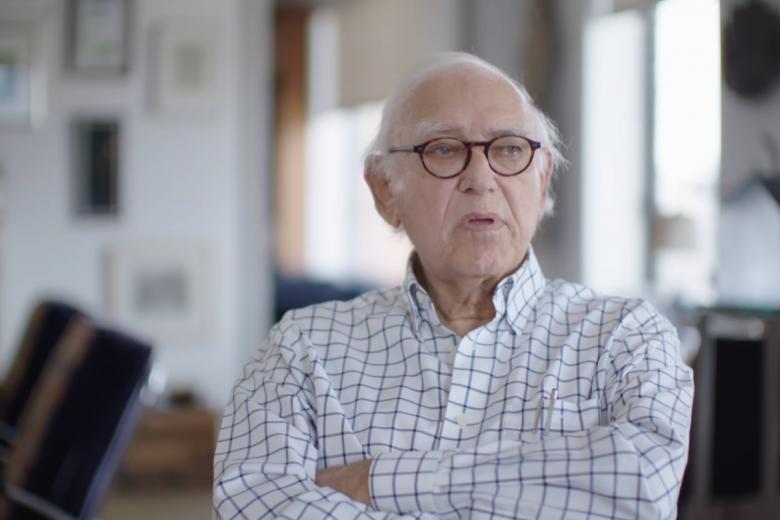James Stewart Polshek, 1930–2022
John Hill
11. september 2022
James Stewart Polshek in 2018. (Photo: Screenshot from "An Architecture Legend: 2018 AIA Gold Medal")
New York architect James Stewart Polshek, former dean of Columbia University GSAPP and founder of Polshek Partnership, the precursor to Ennead Architects, died at his Manhattan home on September 9 at the age of 92.
Described by the New York Times in their obituary as a "quiet giant of modern architecture," James Stewart Polshek designed a number of important and recognizable buildings in and beyond New York City — the Rose Center for Earth and Space at the American Museum of Natural History and the Clinton Presidential Center in Arkansas, to name just two — but he was not an architect with an easily recognizable style nor one inclined to the trappings of celebrity. Regardless of this pair of famous projects, modesty and social responsibility are apt descriptors of Polshek, not iconic or starchitect.
Under his eponymous firm, which was established in New York in 1963 and won the AIA Architecture Firm Award in 1992, Polshek designed a wide range of projects, from institutional buildings in Japan early in his career to schools, cultural buildings, and even industrial projects in New York City, where most of his buildings are found. (The firm with the most buildings in this writer's 2011 guidebook to contemporary architecture in NYC is none other than Polshek's.) The architect also embraced old buildings as canvases for projects, carrying out numerous expansions and renovations, most notably the new entrance at the Brooklyn Museum.
In the 1950s, Polshek was educated at Case Western Reserve University in his native Ohio and then at Yale University, where he received his master of architecture under Louis I. Kahn. When it came time for Polshek to enter academia in an administrative capacity, it was at Columbia University in New York, where he was named dean of the School of Architecture (now Graduate School of Architecture, Planning and Preservation, or GSAPP) in 1972. He served in the role for fifteen years and was responsible for "assembling an ideologically diverse faculty with whom he developed a socially relevant curriculum, created new degree-granting programs in planning and preservation, and established the interdisciplinary Temple Hoyne Buell Center for the Study of American Architecture, among other initiatives," according to the school.
Polshek maintained his practice while he was dean at Columbia, growing his firm into one that "drew generations of talented and like-minded architects to the office, defining a studio culture of collaboration and a practice model informed by social responsibility and environmental stewardship," as described by Ennead, successor firm to Polshek Partnership. This social responsibility is evident in Architects/Designers/Planners for Social Responsibility, which he cofounded in 1981 and continues to work for social justice in the built environment.
Polshek retired from practice in 2005 and five years later Polshek Partnership transitioned to Ennead Architects, its name referring to the nine partners that remained in the office. The accolades did not stop with his retirement, and in 2018 he was given the AIA Gold Medal from the American Institute of Architects. The short film made on that occasion, embedded below, is worth watching, for hearing from his partners and colleagues on what made him such a fitting medalist — and for hearing from the architect himself.
